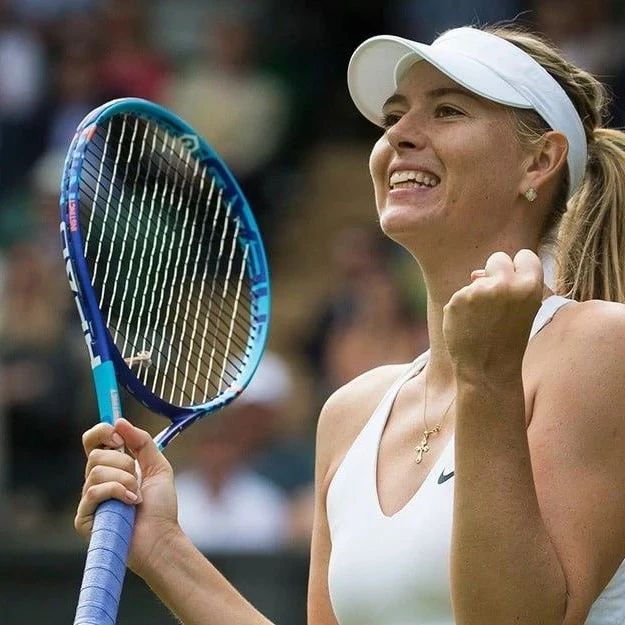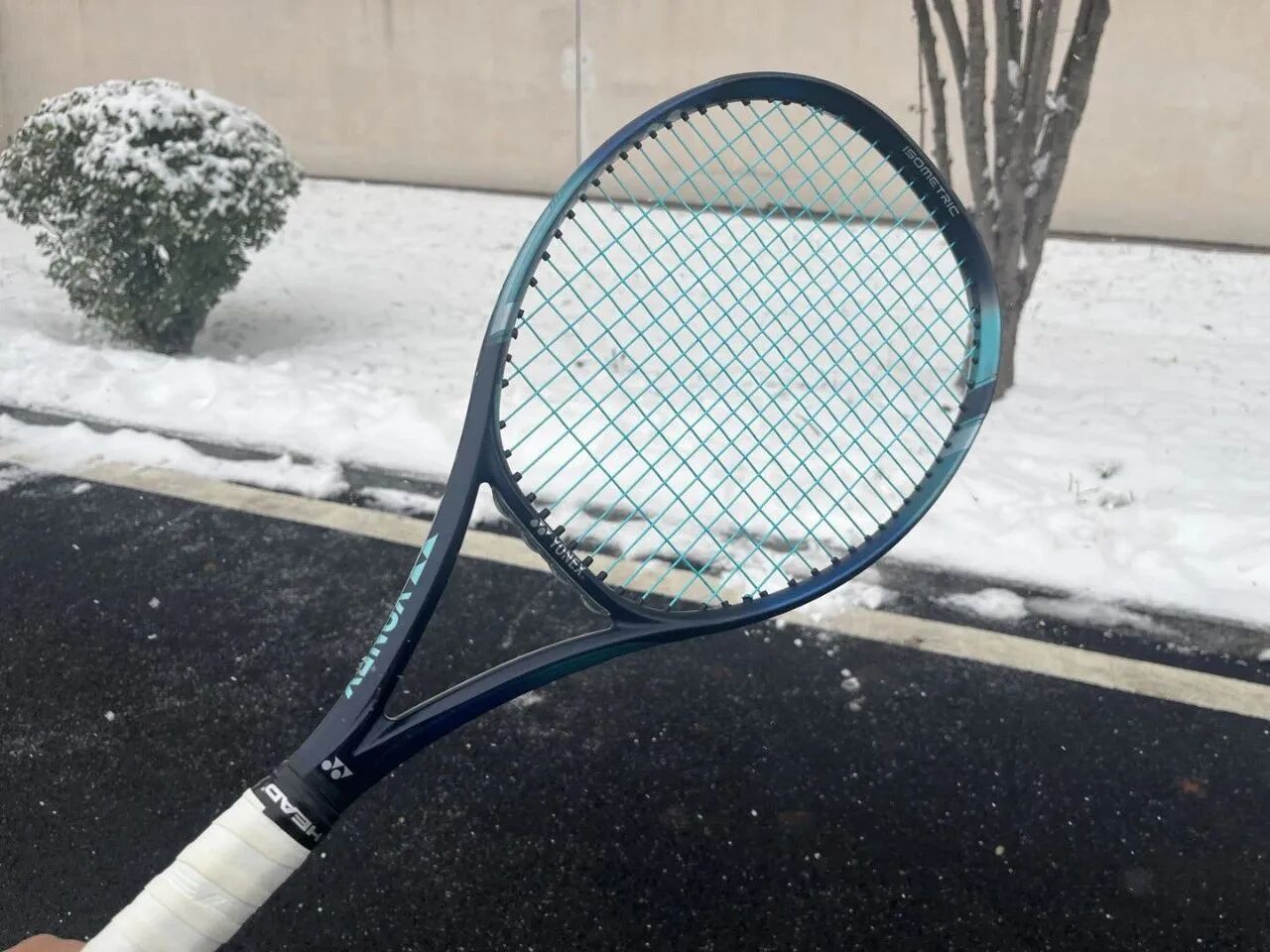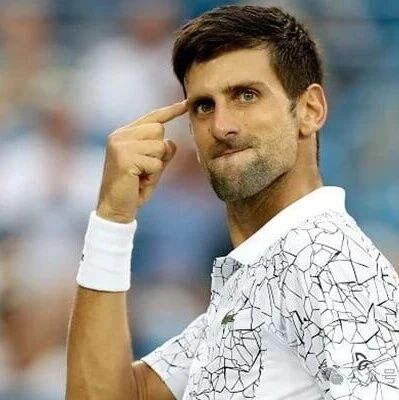Tennis Technique and Tactics Basics: Understanding the Timing of Your Shots, Inspired by Sinner's Textbook-Style Hitting
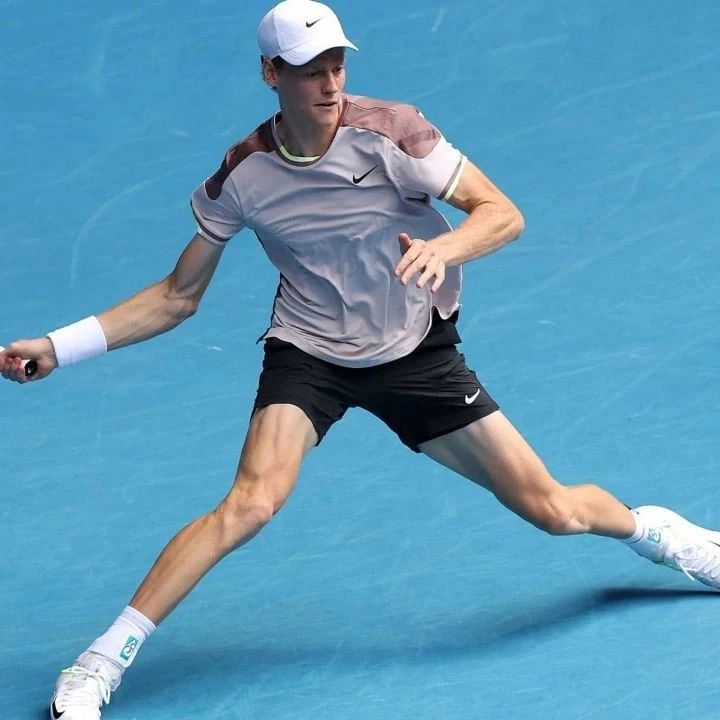
I love math—it’s a subject that’s logically clear and beautifully structured. For instance, a tennis ball never suddenly decides mid-flight to change its trajectory or even turn around and head back toward you. Numbers are no different from tennis balls: once you grasp their underlying patterns and rules, mastering them and using them becomes anything but challenging. — Li Na, *Playing Alone*
01
Writing Context
In the past, the author rarely discussed tennis techniques and tactics in previous articles—mainly because they had always struggled to find a clear, systematic way to explain these concepts.
It wasn’t until recently, when I revisited "Playing Alone," that I resolved to follow Sister Na’s example—sharing the core principles of tennis matches while clearly explaining the underlying logic behind techniques and tactics.
We hope that after reading this series of articles, readers will be able to combine it with their own real-life situations and begin developing a solid framework for analyzing and understanding techniques and tactics.
An excellent tennis player is undoubtedly an active participant in devising and adjusting strategies—simply following the coach’s instructions won’t guarantee victory in every match. After all, tennis is a solitary sport, where players must step onto the court entirely on their own.
02
Tennis is a game of timing.
At its core, tennis is a strategy game all about timing. At the heart of every shot and tactic lies the key idea of "stealing time"—gaining as much of your own time as possible (by fully preparing and executing winning plays) while squeezing out as little time as possible for your opponent (leaving them unable to reach the ball or forcing them into unforced errors).
Since time is the overarching theme that runs through technique and tactics, discussing them without considering the timing of the shot is like scratching an itch through your shoes—missing the mark entirely and failing to address the core issue.
To keep the understanding as simple as possible, let’s first observe what Sinner did during a single rally before introducing the concept of "universal hitting timing."
(Why choose Sinner? Let’s set aside any positive or negative opinions—his shot discipline and execution are absolutely textbook-level.)
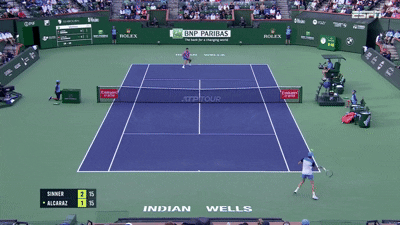
Sinner's 0.3x-speed shot
03
The textbook-perfect batting order
This rally lasted approximately 3 seconds, from Sinner's first shot all the way to his second. Next, we'll analyze it frame by frame—focusing specifically on the "six key movements" labeled above each image. For the grayed-out content, you can simply skim or revisit it later if needed. And don’t forget, you can click on the accompanying images to view them in an enlarged format! (★ ω ★)
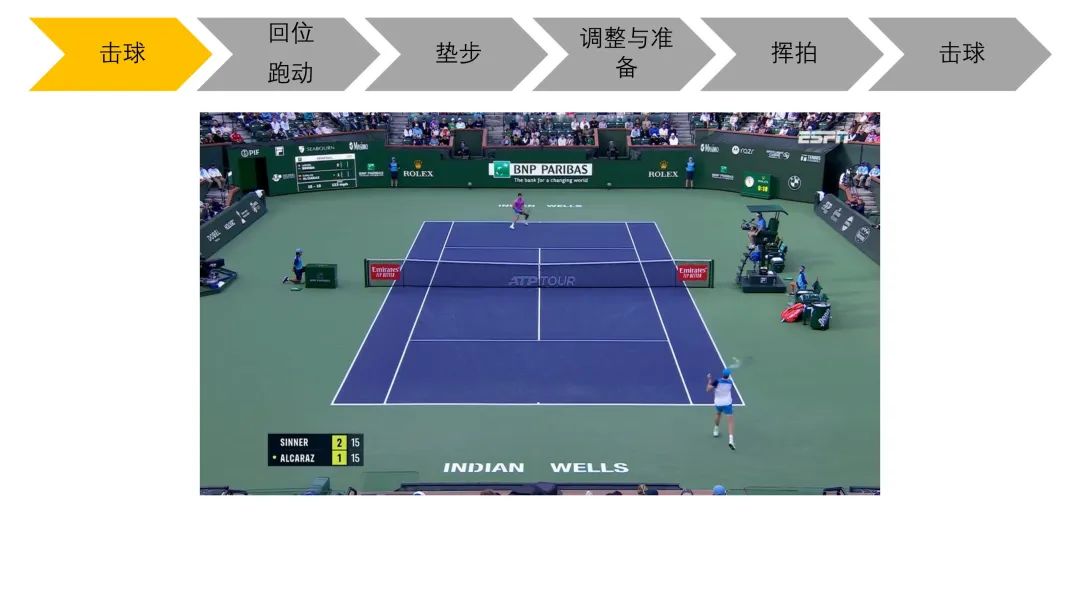
Hitting the ball: In this rally, we’ve chosen Sinner’s first shot as our starting point.
Thanks to Alcaraz's dominance in the middle of the court, he forced Sinner to hit shots from well outside the singles sideline. On paper, Sinner appeared to be on the defensive.
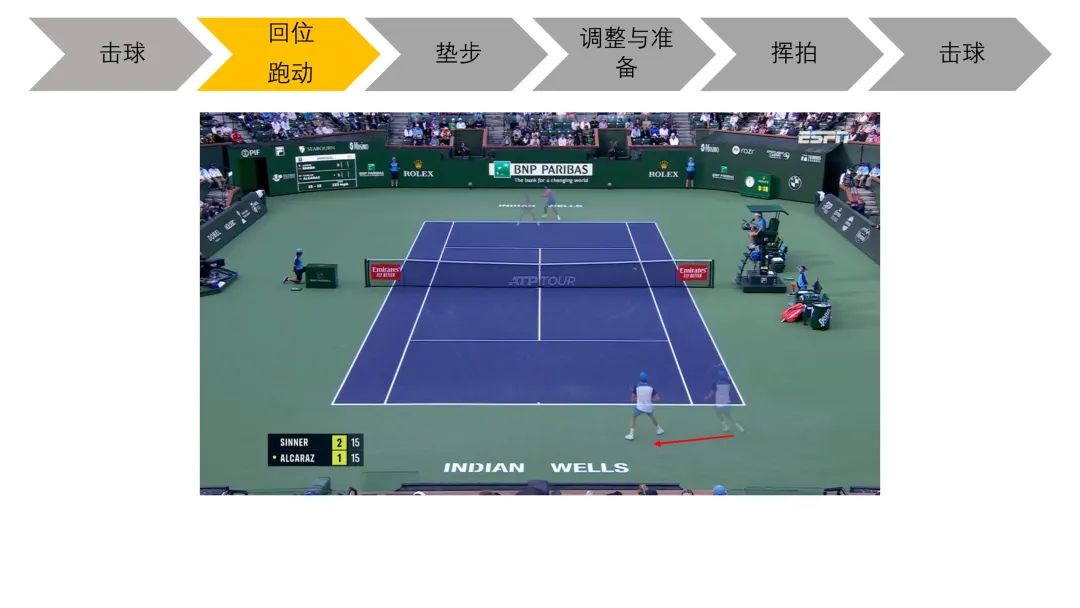
Recovery Movement: After completing his shot, Sinner plants his left foot firmly on the ground and smoothly executes a forward crossover step to return to his ready position.
Considering the return-to-position during the swing is absolutely essential, and the forehand stroke naturally sets up a left-foot push-off motion that helps achieve this. After completing his shot, Sinner was already positioned outside the singles sideline—but if he hadn’t managed to get back to a spot slightly right of center before his opponent’s next hit, he would have lost the point.
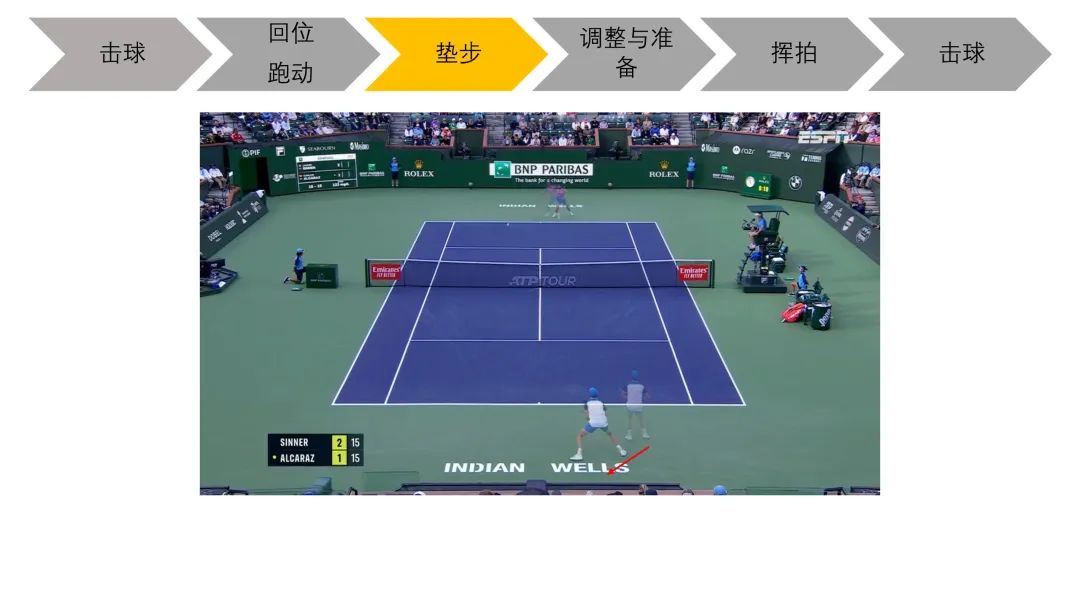
Drop step: After retreating to regain positioning, Sinner analyzed the court layout and his opponent’s swing motion, anticipating a potential deep shot. He took a drop step, moving backward about one meter toward the left-rear corner. The key for professional players lies in seamlessly combining the drop step with their initial reactive movement.
Alcaraz hasn’t yet stepped onto the court; instead, he’s more likely to powerfully hit the ball toward the left side of the court, forcing Sinner to spend extra time adjusting and preparing—while simultaneously ensuring he covers the shortest possible distance to return to his position. Clearly, Sinner’s immediate anticipation was spot-on: deep shot—step back with a shuffle, left half-court—shuffle left again. By the time he finishes the shuffle, his left foot is already in a powerful, grounded stance, ready to transition swiftly into a forward crossover step for the quickest possible adjustment.
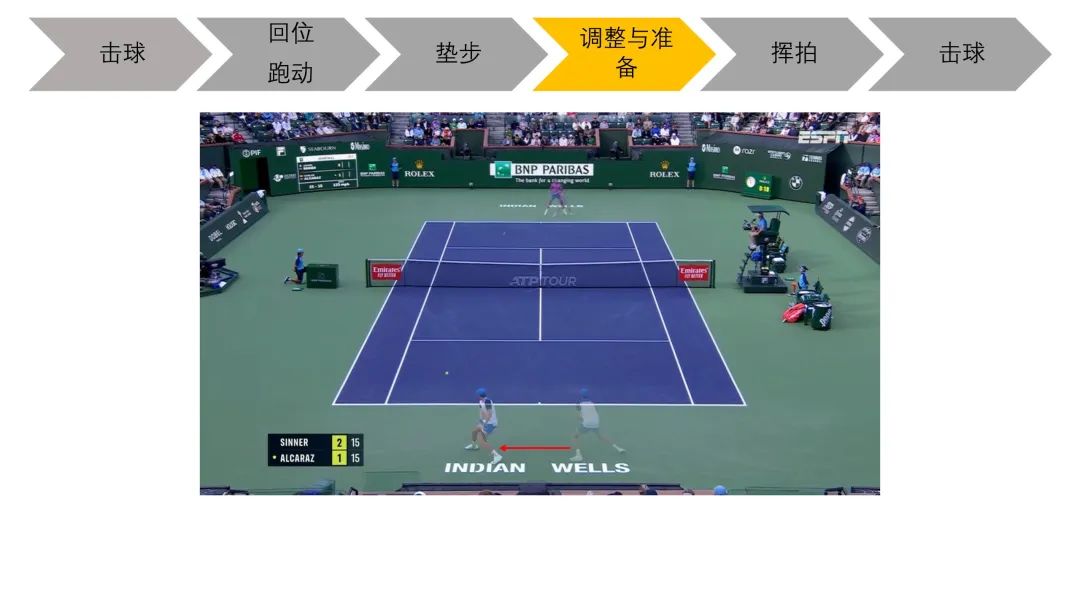
Adjustment and Preparation: As Sinner uses a crossover step to adjust, his upper body completes the backswing motion, ready to swing forward.
Alcaraz’s return lacked both angle and speed, giving Sinner plenty of time to adjust, prepare, and execute a powerful spin-driven shot. Looking back, it was clear Sinner had set himself up perfectly for a game-changing rally.
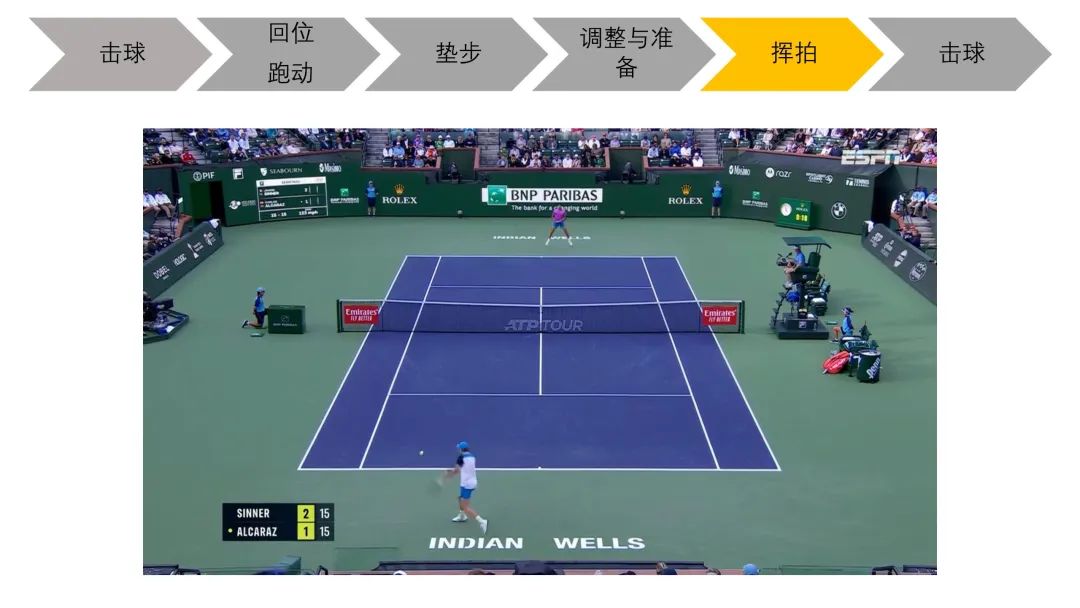
Swinging the racket: In the split second after the tennis ball bounces, Sinner uses his right leg for support and initiates the swing motion by internally rotating his right hip.
In the previous rally, Sinner had already made thorough preparations, and at this point, he would most likely opt for a deep shot to the right side—first, to push Alcaraz, who was about to step onto the baseline, out of bounds; and second, to ensure he could return to his position with the shortest possible distance.
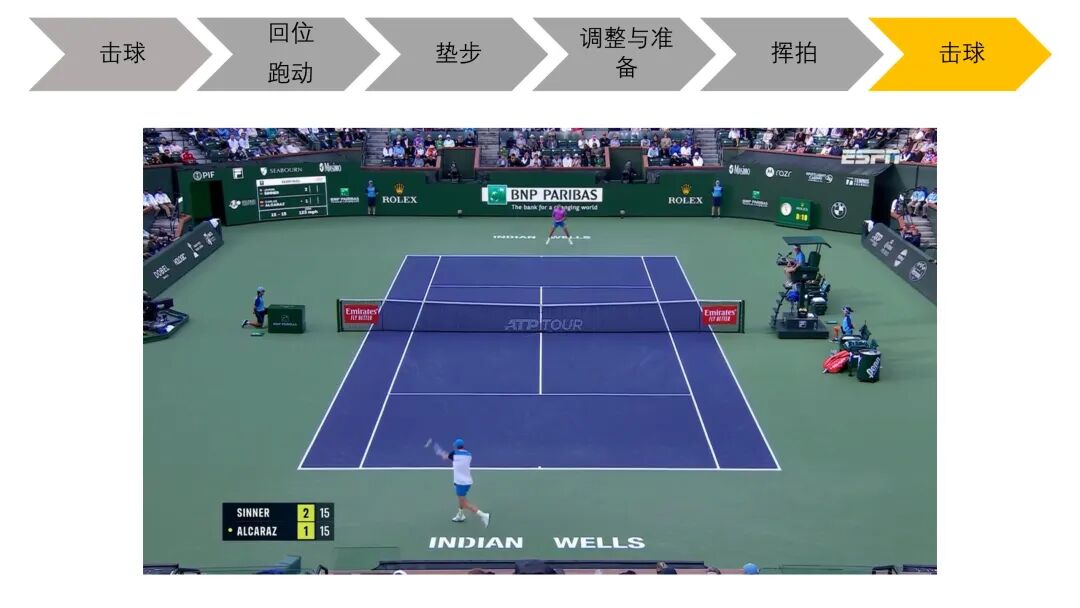
Hitting the ball: Sinner opted for a powerful backhand shot toward the right side of the court, regaining a favorable position.
The rally ends, and at this point, Sinner and Alcaraz are evenly matched on the court—there’s no clear advantage for either player. Remember earlier, when Sinner was receiving the ball just outside the singles sideline? With a single adjustment in his shot placement during that rally, he managed to regain his position on the court.
Through the frame-by-frame analysis above, I’m sure everyone now has a clear understanding of the six steps involved in hitting the ball. Now, let’s revisit Sinner’s swing, keeping the insights from our previous analysis in mind.
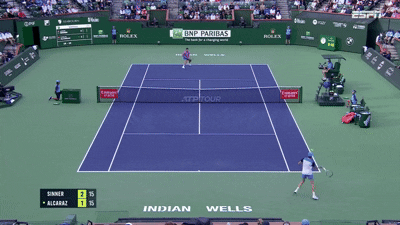
Sinner's 0.2x-speed shot
“Strike the ball—return to your starting position and move—step in—adjust your stance—swing the racket—hit the ball.” If you can recite these six steps clearly while referring to the diagram above, then you’ve truly grasped the sequence of the hitting motion.
04
General Batting Timing
(Curriculum and Research Content)
Having understood the textbook-perfect batting order, we naturally introduced the concept of batting sequence, using time as our guiding axis.
Time sequence refers to the arrangement of actions in chronological order, emphasizing the logical progression along the timeline.
The timing sequence of a tennis stroke refers to arranging the actions involved in hitting the ball in chronological order. When discussing general stroke timing, the ball's trajectory serves as the primary axis, while actual time is the secondary one.

A textbook-perfect batting sequence chart
The most important aspect of a hitting timing diagram is that the player's swing corresponds precisely with the ball arriving in the hitting zone. The duration of the player's motion can be adjusted—or even shortened—depending on their skill level.
For instance, what beginners should focus on adjusting most is the continuity of their strokes—specifically, perfecting their basic movement structure: ensuring proper preparation and executing smooth, fluid swing motions—rather than wasting time on unnecessary "step-in" movements or "return-to-position" runs.
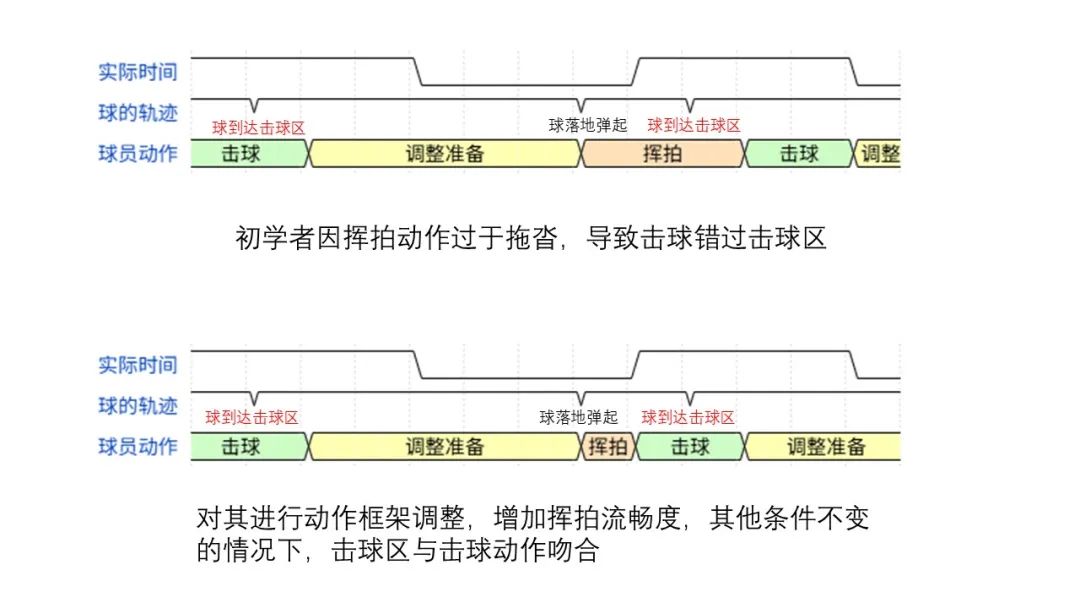
For example, once a high-level player has secured a favorable position, they can minimize the time needed for movement adjustments by carefully choosing their shot—and then clinch a point with just a few well-coordinated plays.
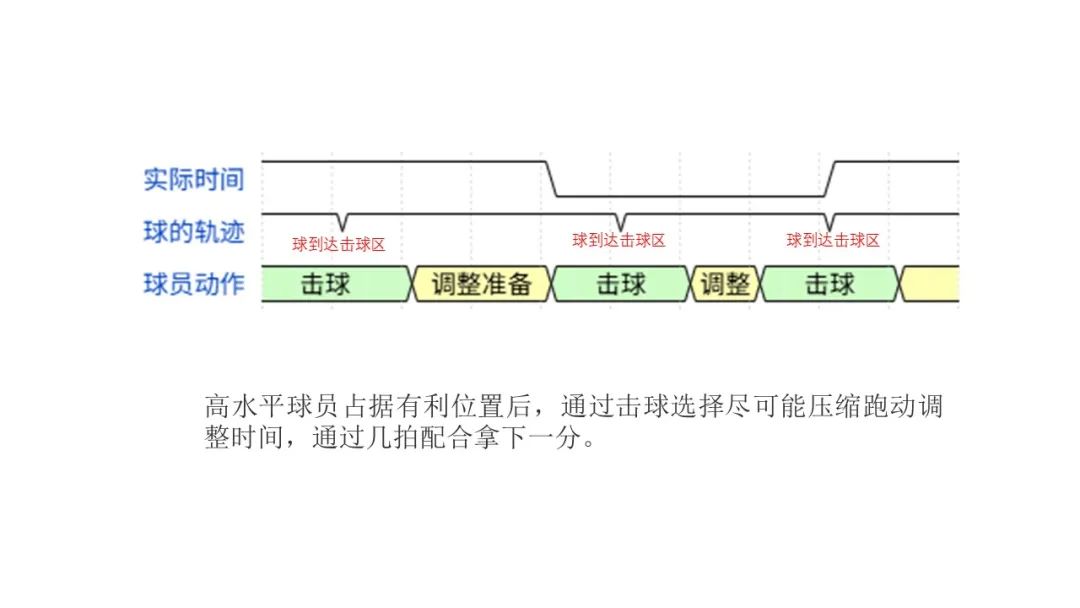
From the examples above, it’s easy to see that clearly explaining and understanding the relationship between the hitting motion and the trajectory of the tennis ball on a timeline can help refine technique—and even enable deeper analysis and comprehension of tactics.
05
Epilogue
The rhythm in tennis has a unique, dynamic quality—it differs from the fixed, unchanging beat of music, instead reflecting an ever-evolving, back-and-forth interplay.
In the match, each rally forms an independent rhythmic unit, requiring players to simultaneously take on two roles: both the creator of rhythm—proactively applying pressure through ball speed, spin, and placement—and the adapter of rhythm—immediately adjusting their response based on the opponent’s return.
Only with the concept of timing can we even begin to discuss the rhythm of tennis.
